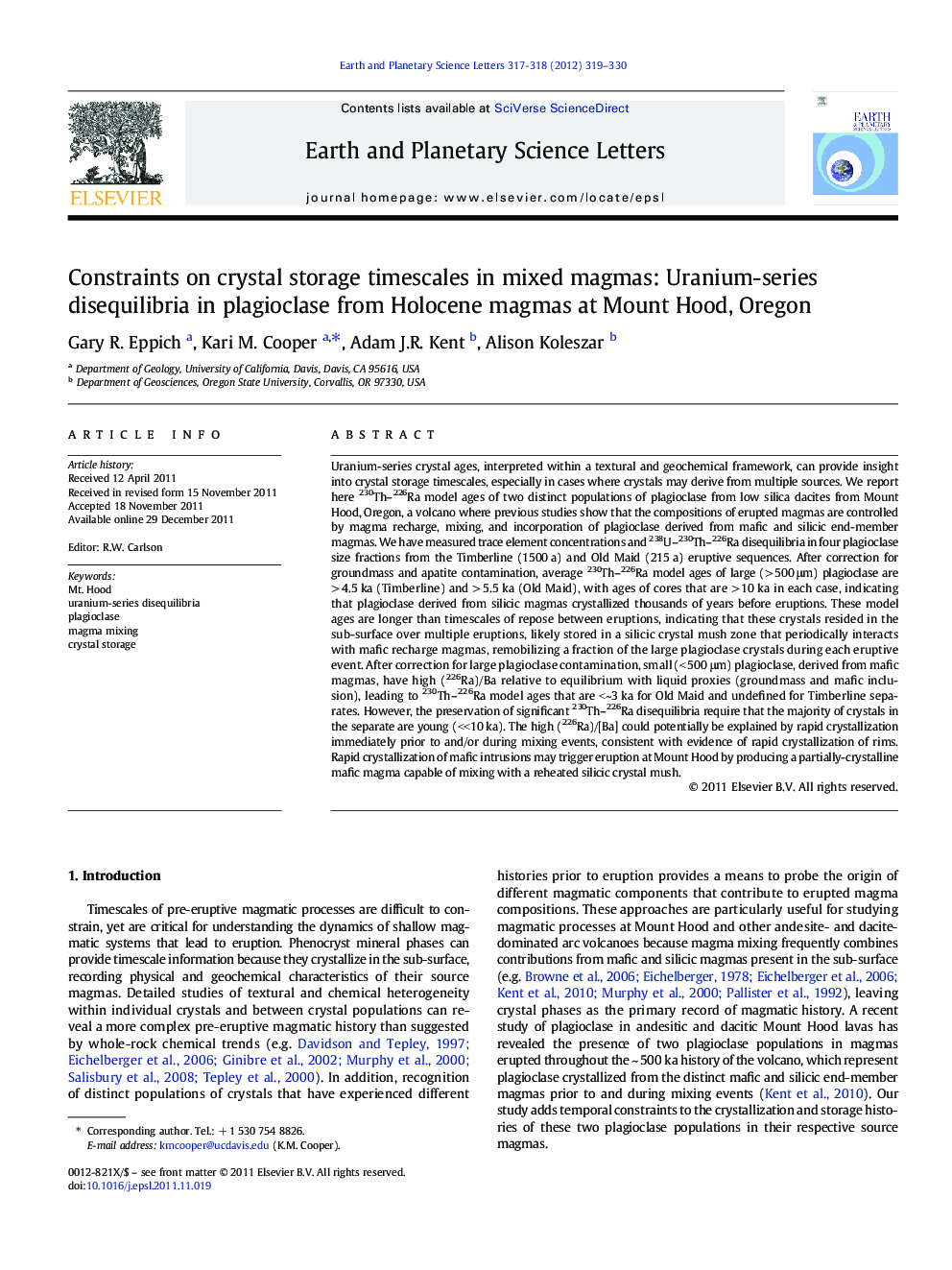| کد مقاله | کد نشریه | سال انتشار | مقاله انگلیسی | نسخه تمام متن |
|---|---|---|---|---|
| 4677648 | 1634812 | 2012 | 12 صفحه PDF | دانلود رایگان |

Uranium-series crystal ages, interpreted within a textural and geochemical framework, can provide insight into crystal storage timescales, especially in cases where crystals may derive from multiple sources. We report here 230Th–226Ra model ages of two distinct populations of plagioclase from low silica dacites from Mount Hood, Oregon, a volcano where previous studies show that the compositions of erupted magmas are controlled by magma recharge, mixing, and incorporation of plagioclase derived from mafic and silicic end-member magmas. We have measured trace element concentrations and 238U–230Th–226Ra disequilibria in four plagioclase size fractions from the Timberline (1500 a) and Old Maid (215 a) eruptive sequences. After correction for groundmass and apatite contamination, average 230Th–226Ra model ages of large (> 500 μm) plagioclase are > 4.5 ka (Timberline) and > 5.5 ka (Old Maid), with ages of cores that are > 10 ka in each case, indicating that plagioclase derived from silicic magmas crystallized thousands of years before eruptions. These model ages are longer than timescales of repose between eruptions, indicating that these crystals resided in the sub-surface over multiple eruptions, likely stored in a silicic crystal mush zone that periodically interacts with mafic recharge magmas, remobilizing a fraction of the large plagioclase crystals during each eruptive event. After correction for large plagioclase contamination, small (< 500 μm) plagioclase, derived from mafic magmas, have high (226Ra)/Ba relative to equilibrium with liquid proxies (groundmass and mafic inclusion), leading to 230Th–226Ra model ages that are <~3 ka for Old Maid and undefined for Timberline separates. However, the preservation of significant 230Th–226Ra disequilibria require that the majority of crystals in the separate are young (<<10 ka). The high (226Ra)/[Ba] could potentially be explained by rapid crystallization immediately prior to and/or during mixing events, consistent with evidence of rapid crystallization of rims. Rapid crystallization of mafic intrusions may trigger eruption at Mount Hood by producing a partially-crystalline mafic magma capable of mixing with a reheated silicic crystal mush.
► New 230Th–226Ra model ages for two populations of plagioclase from Mt Hood magmas.
► Large crystals have average ages > 4.5 ka, and core ages > 10 ka.
► Small crystals have average ages < 3 ka and may have crystallized rapidly.
► Plagioclase stored for > 10 ka is remobilized during mixing events.
► Mixing likely triggered eruption which may be characteristic of andesitic magmas.
Journal: Earth and Planetary Science Letters - Volumes 317–318, 1 February 2012, Pages 319–330